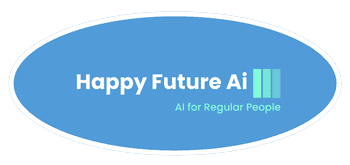Bridging Academia and Industry: Jake Trippel’s Vision for AI at Vervint

Jake Trippel, Executive Consultant at Vervint and Dean, College of Business and Technology at Concordia University, St. Paul. His doctoral research focuses on AI and its impact on organizations.
How do organizations navigate the tightrope between AI adoption and the preservation of employee morale and job security?
The organizations that learn the fastest will have a competitive advantage in the era of AI. Upskilling and re-skilling will be essential priorities and functions in the future enterprise to help fill the enormous labor gaps we have across our evolving digital economy. Organizations need to paint the opportunity and brighter future that is ahead as jobs evolve.
Yes, some jobs will go away but what an opportunity to learn new skills or to have your job evolve into new functions and areas of responsibility. Even more exciting is the creation of jobs, roles, and responsibilities that we have not even thought of yet. As each organization continues along its journey towards automation, intelligence (data-driven enterprise), and experience, so much opportunity will be created in this unprecedented era of productivity!
What are the prevalent apprehensions employees harbor about AI integration, and what strategies can firms deploy to alleviate these fears?
In working with Executives worldwide and speaking with students in my graduate and undergraduate programs at Concordia University St. Paul, it is clear that job loss and lack of job availability are the major fears. Skill advancement via Education is the solution.

Organizations must determine the present and future skills of the industries and organizations and develop a skill roadmap for their roles and functions. I see a significant opportunity for large re-skilling initiatives and programs within organizations to focus on future skillsets, presenting the space and opportunity to alleviate fears.
Could you highlight a case study of a corporation that has seamlessly woven AI into its organizational fabric, and what insights can be distilled from their journey?
The best case study I teach in graduate programs is IBM. Tech professionals like me, and industry-wide, once thought IBM was headed to the corporate graveyard. You have to give them a lot of credit for reinventing themselves. IBM has effectively integrated artificial intelligence into its organizational fabric through its AI system, Watson. IBM’s journey with AI offers valuable insights into how corporations can embrace AI while fostering innovation and maintaining a solid employee base.
I cannot predict the future, but a company once viewed as an afterthought has used the AI revolution to return to relevancy. You truly have to give them a lot of credit for taking and succeeding through the difficult journey of reinvention.
In what ways can companies craft AI policies that are not only exhaustive and equitable but also easily decipherable for every employee?
Excellent question and a core pillar of my Doctoral work. Artificial intelligence and AI-driven technologies like ChatGPT bring rapid and disruptive technological advancements and pose unique challenges and opportunities for all organizations, particularly in policy development and adaptation.
The problem lies in how leaders of enterprises amidst a swiftly evolving AI landscape can effectively and responsibly develop and implement policies to harness the potential of AI technologies. Organizations must discover strategic methodologies to keep up with the fast-evolving realm of technology and capitalize on it, guaranteeing their continuous growth and continued relevance in a tech-dominated landscape.
What constitutes the gold standard for disseminating AI-related developments to staff, ensuring uniform understanding across the board?
I don’t believe the gold standard has been set yet. My doctoral work focuses on this challenge and is only a small contribution but a significant and growing area of study moving forward as we rethink everything in the modern enterprise. I predict multiple models will be developed as we completely rethink organizational development, design, etc. I am particularly interested in power distribution and how AI will disrupt the status quo.
How can businesses pinpoint and present AI success narratives that resonate deeply with their workforce, thereby fostering AI adoption?
There is a misperception in the marketplace that we are heading towards the creation of an AI deity that will take over the enterprise. People need to understand that we are heading towards hundreds and thousands of AI-enabled capabilities that will influence and transform the modern enterprise. Great AI today focuses on solving highly focused and defined problems.
This trend will continue for the foreseeable future. It will present opportunities to resolve a high volume of organizational challenges creating momentum and space to influence the workforce and driving adoption.
What are the cornerstone elements of a robust AI training program, and how can entities customize such initiatives to suit their workforce’s unique needs?
I just finished authoring the Masters in AI program at Concordia University St. Paul. The program encompasses a scenario-based design, and I believe in dynamic, relevant, real-time experiences. I believe organizations can achieve the same thing in their training programs.
Take your most significant challenges and have your employees iterate towards a solution. AI is a perfect space for this and creates an opportunity for POC (proof-of-concept) projects to test in real-time applicability and efficacy. As projects mature, organizations can make the path and space for production-ready solutions, giving them time to mature while growing your employees skillsets!
Based on your expertise, what methods are paramount for companies in harvesting and deciphering competitive intelligence on AI deployment?
We are entering a dynamic era of competitive benchmarking as each organization gets to benchmark its progress with AI capability. Two main areas of focus will separate the innovators from the rest: Algorithm development and model development.
As the foundation and backbone for AI systems, algorithm development drives how data is processed and how insights are formed. Significant research is occurring in this space worldwide as breakthroughs in algorithmic approaches lead to performance gains, driving new features and capabilities in new AI applications. We can from an era of simple decision trees, but now we are heading towards complex deep learning networks.

Models are the algorithm’s output after being trained on a dataset. Model quality is everything, and organizations that have high volumes of high-quality training data combined with engineering sophistication will have the competitive advantage to continually tweak and tune model parameters, driving predictability and model performance. However, model innovation typically becomes widely available, and
democratization flattens the competitive landscape, shifting the competitive advantage to the organizations that can develop, train, and deploy rockstar models. I view this as the future of the consulting world. Legions of teams developing algorithms, training models, and constantly tweaking trillions of parameters, driving endless value to their clients.
How can a company nurture an environment brimming with innovation, prompting employees to actively engage in AI-centric brainstorming?
Organizations have to promote, foster, and develop cultures of experimentation with a massive emphasis and acceptance of risk-taking. Equally important is the investment in AI tools, datasets, and the digital playgrounds/sandboxes necessary to explore new ideas and concepts. Most importantly, cultures need to invest and constantly support continuous learning. This space is evolving at hyper speeds, and organizations need to create environments to keep pace.
Which communication avenues should firms establish to guarantee transparency and foster open discussions about AI integration?
A trendy answer would be investment in communication platforms. That is important but will never replace the fostering and support of mentoring and coaching environments among peers. There is no expert in this space, and no one can keep pace with the tremendous advancements in AI.
More than ever, this is a team game and the more champions, leaders, etc. take advantage of those invaluable coachable moments, the space is created for transparency and open discussion about AI integration. Done well, a compounding effect is created allowing space for continual growth.
In what manner can companies effectively integrate employee feedback into their AI strategic decision-making framework?
Platforms are essential, but the network of people is the strongest, most long-lasting sustainable option for organizations. Think of it like deep learning, the power of connection and association. In harmony, what a space for connection, growth, and advancement.
Could you expound on the advantages of creating interdisciplinary teams for AI projects, and how can these groups synergize for peak performance?
Comprehensive problem-solving is the outcome for organizations that will do this well. A diverse mix of backgrounds, skills, and capabilities creates a pool of different strategies and perspectives, manifesting through the power of association a vibrant strategy or point of view and driving insight or innovation.
The possibilities are endless when you can create a space for this type of magic giving teams the space for enhanced creativity and innovation. Done well, expansive growth and knowledge among individual members if the result and they get to build on this with every interaction and initiative.







